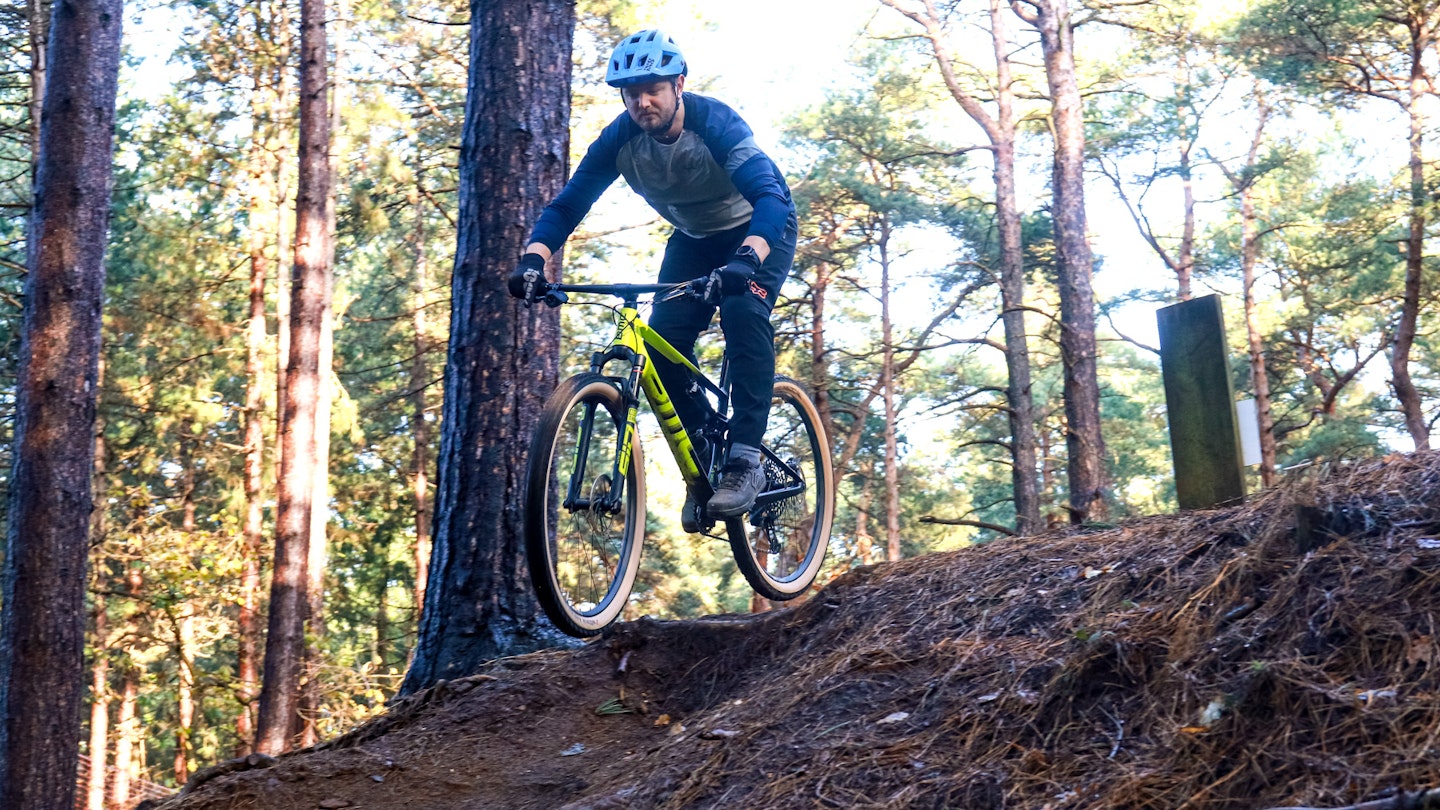As Enzo Ferrari once famously said: “Win on Sunday, sell a car on Monday” – those immortal words are now finding themselves a new and unlikely home in a review of a mountain bike, the BMC Fourstroke.
But this is no ordinary mountain bike, this is a carbon fibre race machine with Olympic heritage, a version of which was ridden to Gold by Tom Pidcock in 2021.
Thing is, I’m not Tom Pidcock, and it’s highly unlikely that you are either. So can mere mortals unlock the performance potential of such a pedigree cross-country race bike, or would we be better off on something more pedestrian?
Verdict: A punchy price tag means you’d have to be a pretty serious XC rider (and in all likelihood racer) to justify this version of the Fourstroke – it costs as much as two decent spec mountain bikes. If you are, then the BMC as tested is a phenomenal machine. It climbs so well I was searching for a secret motor, descends like a trail bike, and is packed with excellent tech like electronic shifting and a clever dropper post. I found its huge capability a confusing proposition - read on to find out more.
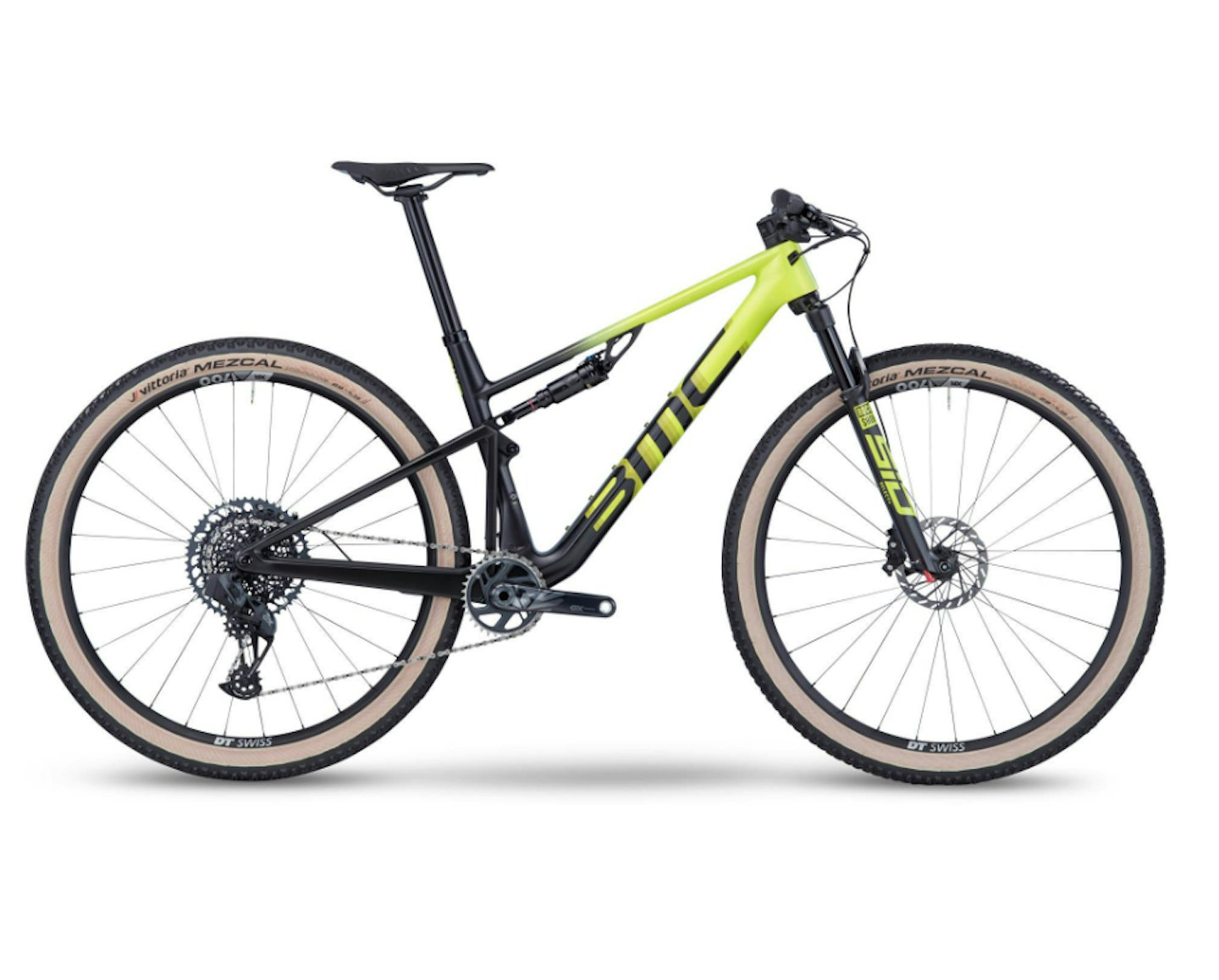
www.bmc-switzerland.com
Pros
- Light, stiff, agile
- Climbs like an e-bike
- Confidence-inspiring descender
Cons
- Frame outperforms fork
| Drivetrain | SRAM Gx Eagle AXS |
| Suspension | RockShox SID SL Select+ Fork/SIDLuxe Select+ Shock |
| Wheelset | DT Swiss XR 1700 29-inch |
| Frame | Fourstroke 01 Premium Carbon |
| Brakes | SRAM Level TLM |
| Tyres | Vittoria Mezcal 2.35-inch |
Design, geometry and spec
In truth this isn’t the bike Tom Pidcock rode in the 2020 Toyko Games - there have been some substantial changes including the relocation of the rear shock to the top tube, and for this 2023 model, some geometry tweaks to improve handling.
A slacker head angle and lower bottom bracket are aimed at better handling downhill, while the steeper seat angle puts you right over the pedals when tackling a climb.
The result is an extremely proficient bike in terrain you wouldn’t normally consider “XC” - particularly with those fast-rolling 29-inch wheels monster trucking over the roots and drops.

Build-wise the range looks a bit confusing but is quite simple – it starts with the Fourstroke Four, going up in price through models called Three, Two and One. Then at the top there’s the Fourstroke 01, which is further split into 01 Two and 01 One, the latter being the top of the tree.
We’ve got the 01 Two on test, the second from top, and this gets SRAM’s Gx Eagle AXS drivetrain, a 100mm RockShox SID SL Select+ fork and SIDLuxe Select+ shock paring, and DT Swiss XR 1700 wheels.
Performance – frame, suspension, dropper post
The big difference between the Fourstroke 01 bikes and the rest of the range is the premium carbon used in the frame, and the Autodrop seatpost, which we’ll come to in a minute.
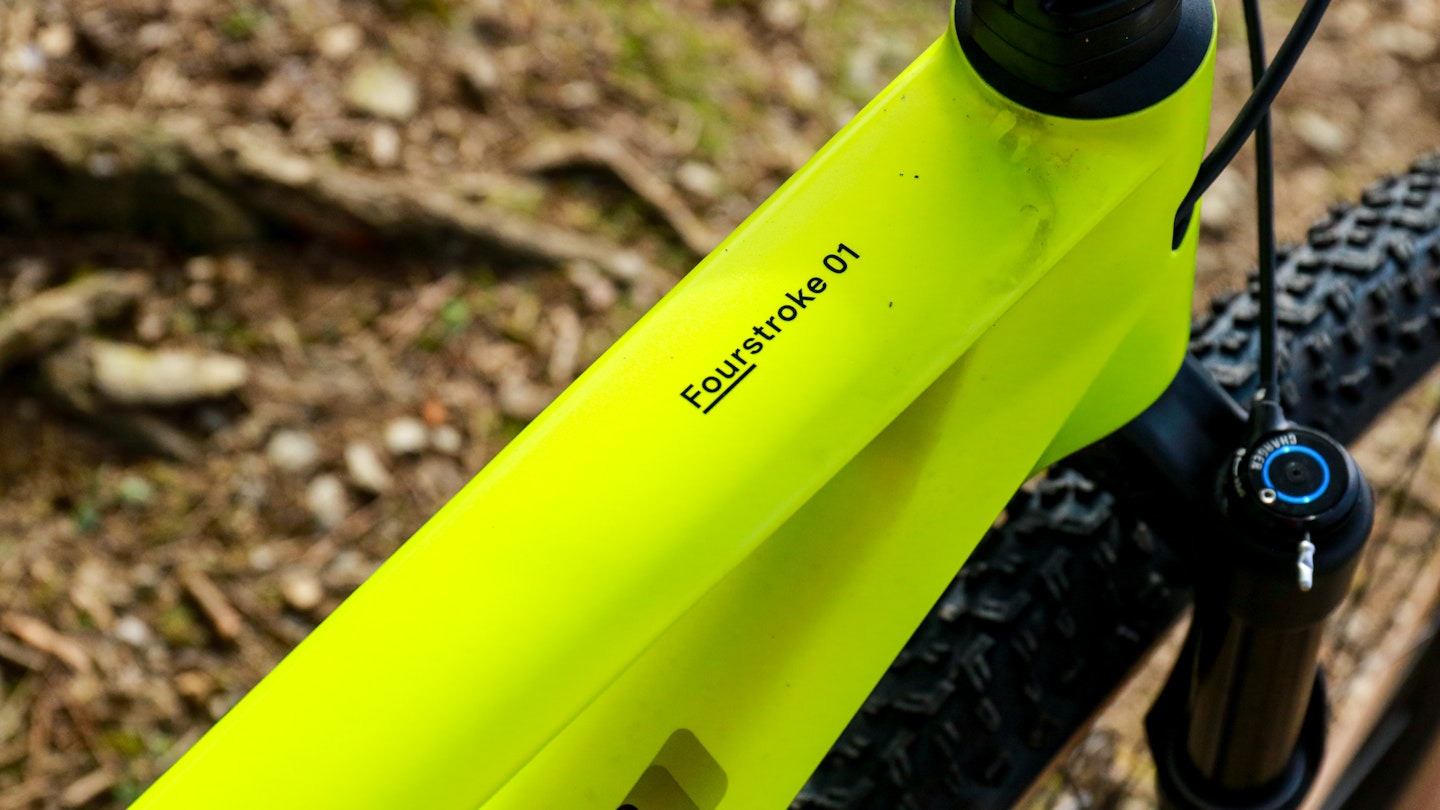
In terms of finish the frame looks and feels absolutely superb – the bright yellow livery on this model might be a bit divisive but I love it, and the quality of the paint and the smoothness of all the tube junctions more than match the price tag.
I also like the diameter of the downtube – it looks like an old oversized aluminium frame, in contrast to the super-skinny top tube. There’s space for two bottles, and a knock block in the steerer to stop the bars spinning around and damaging the frame.
The front triangle feels very stiff while there’s a bit of lateral shift from the rear – but it's a small flex that if anything enhances your connection to the trail below. It also stands up tall in its travel under pedalling load even when you’re seated, and if you lock the suspension out, the bike feels like a fully rigid.
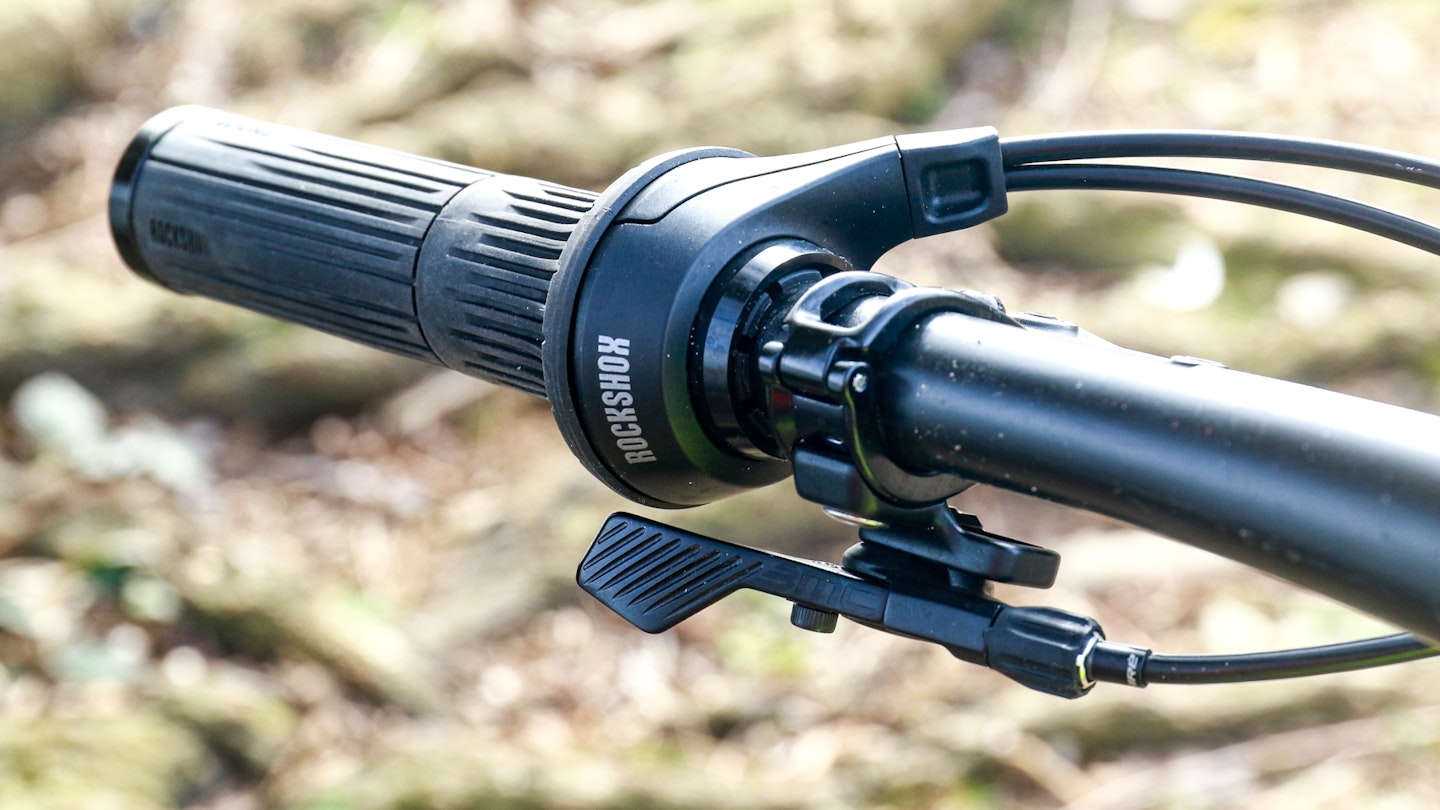
You do this by rotating a GripShift selector (remember those?) on the left bar, which seems odd at first but quickly becomes intuitive. One twist locks out both ends of the bike – you can’t mix and match, if you wanted a locked-out rear but an open fork for pedalling up a techy climb, for example.
It does mean the left grip is an odd size and this is likely to restrict your choice of rubber – no flanged lock-ons, if that’s your thing.
The SID fork has a stiff chassis that resists getting twangy over repetitive obstacles and feels surprisingly plush (for a race bike) over small bumps. It does ramp up fast though and I found its limit before the frame’s – this is a bit of an issue that we’ll come back to later.
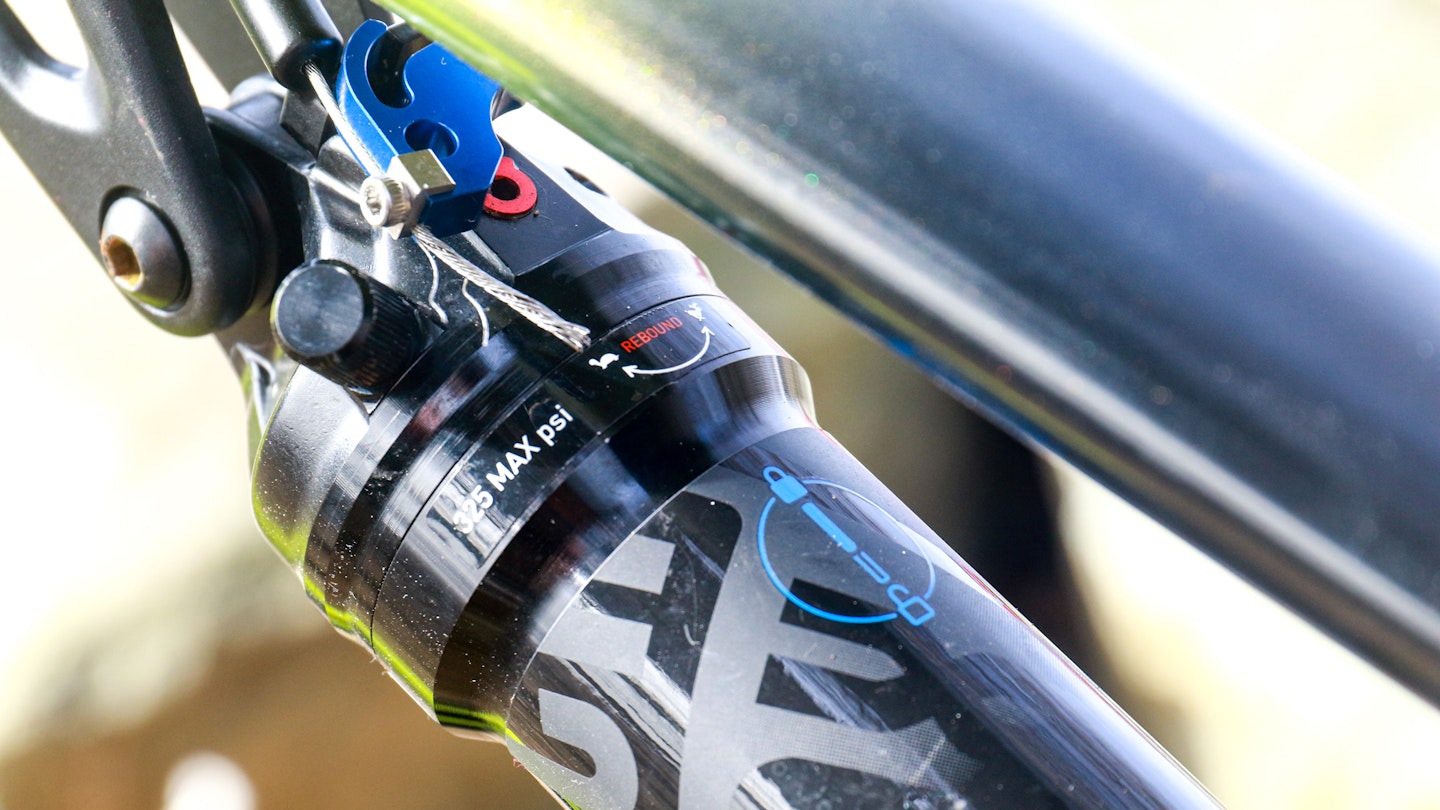
Out back the Rockshox shock draws a neat line between support for efficient pedalling and suppleness for deflecting big hits. I found it a bit springy at first but managed to dial this down with some tweaks to the rebound.
What about the Autodrop seat post?
The press pack for this bike talks a lot about the demands a dropper places on the rider, specifically around having to use your body weight to compress it. I have never noticed this before, but after riding the Fourstroke, I now can’t ignore it.
Squat down dozens or even hundreds of times during a race and the cumulative effort expended will add up – plus, quite often you have to squash the seat down during a tricky section of trail, where ideally you want to be stood up tall rather than compromising your body position.

BMC has innovated this problem away with a dropper post that raises at the push over a lever, and then drops down again by pressing the lever harder. It’s brilliant, and I now want it on all of my bikes.
The system uses compressed air, which means pumping up a tank built into the frame to 14 bar. BMC says you'll get 100 uses from a full tank, at which point the post works like a normal bodyweight actuated dropper. I wasn't counting but I topped it up each time I did the tyres and never ran out of uses.
There are some problems though. The seat tube itself is oval to reduce stress – great from one perspective, because you won’t ever put your seat post in wonky again, but also the proprietary post is the only one that fits. Prefer a Fox Transfer? Tough luck.
It also means you can’t tweak the travel by buying a different post - on this XL bike you get 100mm, and I can’t get the seat low enough for my liking, the high standover height compromising confidence downhill.
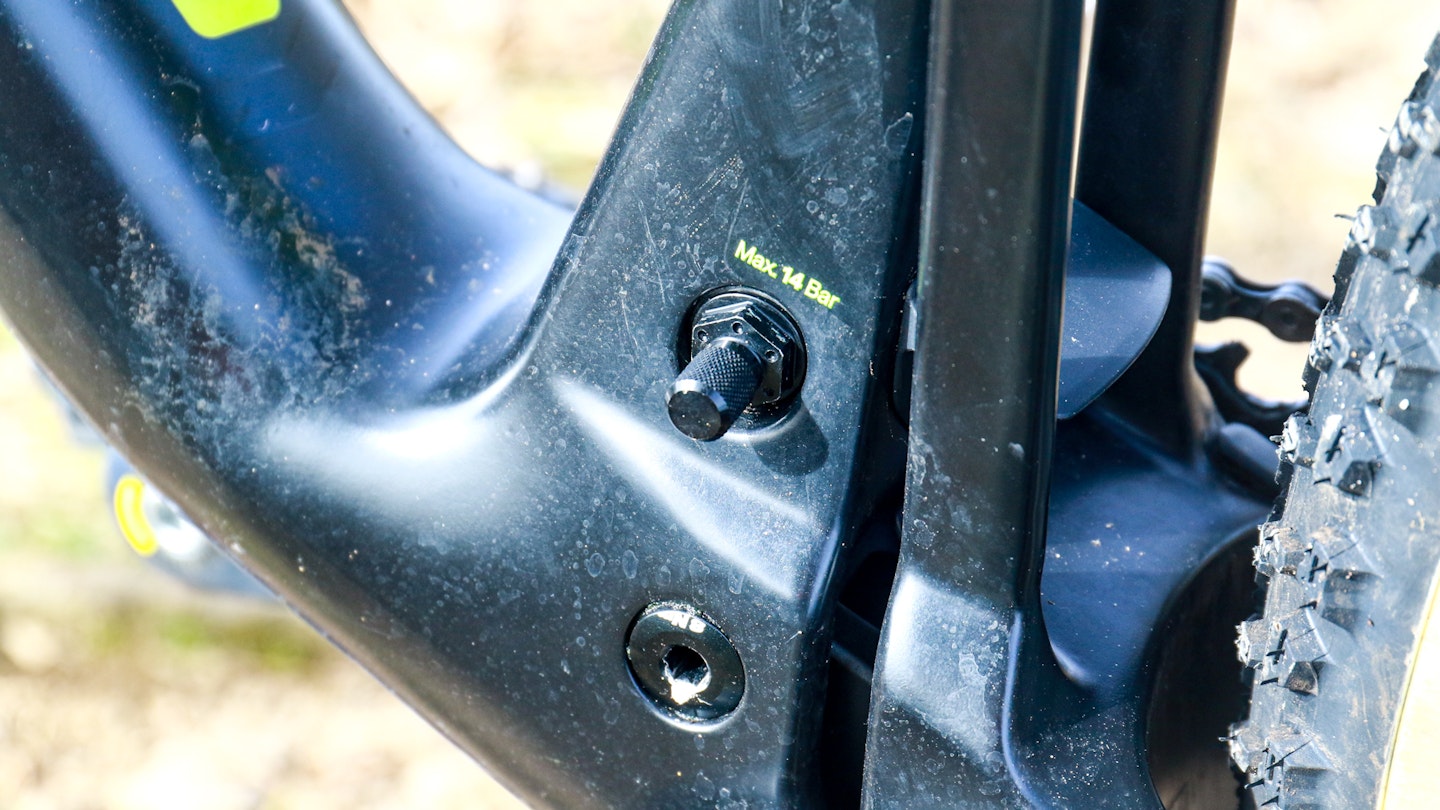
Will BMC mix and match a shorter post from a smaller frame when you come to purchase? Unlikely. You'll also need to pack a long allen key in your bag to access the seat height adjuster bolt, the short one on your multitool probably won’t reach.
Finally, the tank of compressed air used to power the post needs a Schrader valve to top it up. The tyres use Prestas, so you can’t inflate all three at the start of a ride without swapping the valve on your pump. I know this isn’t the end of the world, but it’s annoying, and if you’ve paid nearly £10,000 for a bike, nothing on it should be annoying.
Usability – drivetrain, brakes, and wheels
Much has been said about SRAM’s Gx Eagle AXS gearing so I won’t repeat it – other than to say it’s utterly superb and so long as you keep the battery topped up, makes shifting so slick you barely feel it.
A 32-tooth chain ring matched to a 10-52-tooth cassette provides plenty of range for climbing and descending, and a SRAM universal derailleur hanger makes finding a replacement super easy. I found surface corrosion on the cassette a constant nemesis though, despite fastidiously lubing the chain.
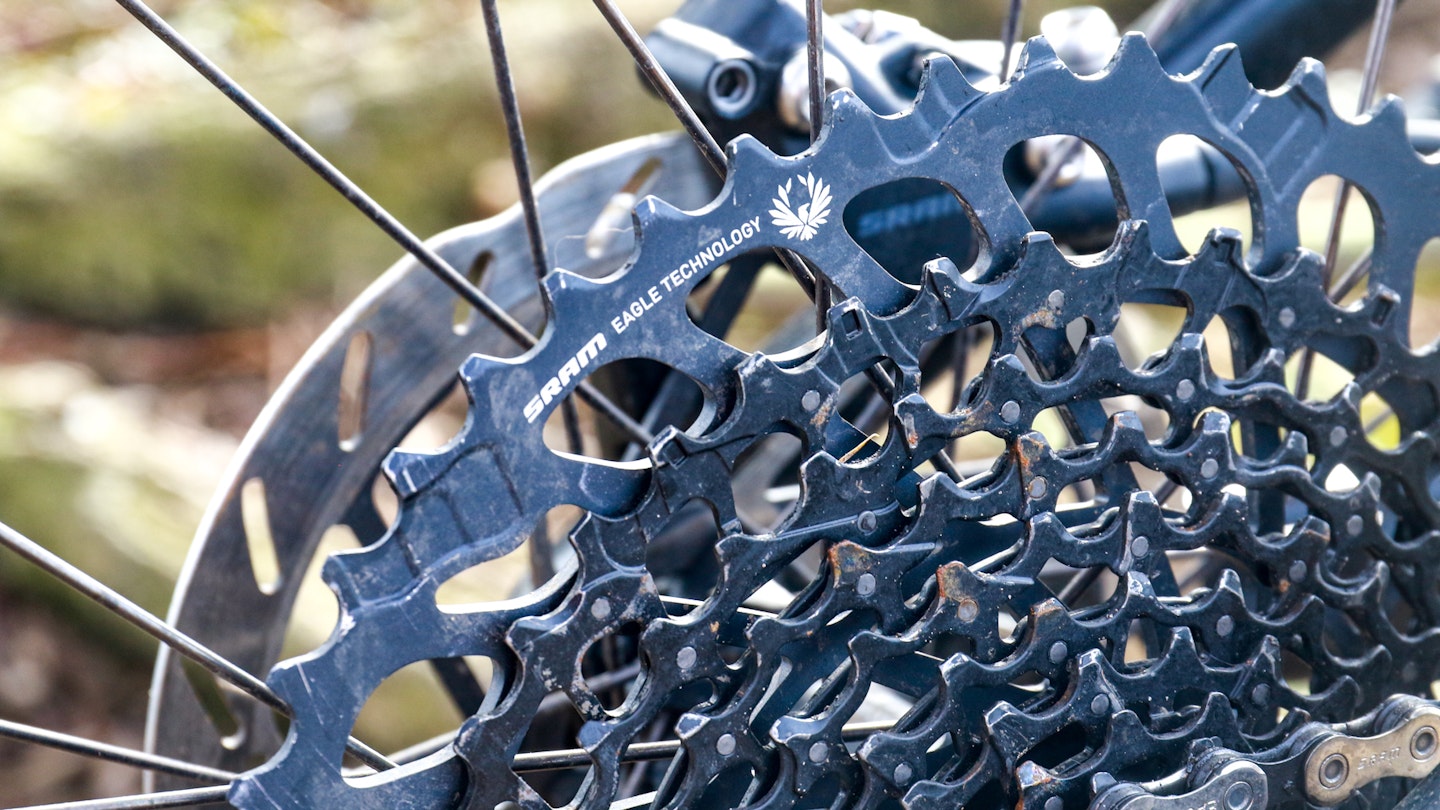
Braking is taken care of by a set of SRAM Level TLM two-pot hydraulics, which offer up substantial bite but not much modulation. On the XL frame you get a 180mm rotor up front, while other sizes get 160mm front and back – this is a nice touch because at nearly 100kg I need a bit more stopping power than a 60kg whippet on a small frame.
The DT Swiss wheels are light and stiff and spin up super-fast, with a 25mm internal width that gives the Vittoria Mezcal tyres a decent footprint. These have a super sticky compound and look awesome in tanwall.
The tyre is a lightweight XC construction so it’s worth choosing your lines carefully and being prepared for thorns or other sharp objects (take a spare tube, is what I’m saying). That said, they were set up tubeless from the factory, and I had two punctures during my time testing the Fourstroke that sealed up without issue.
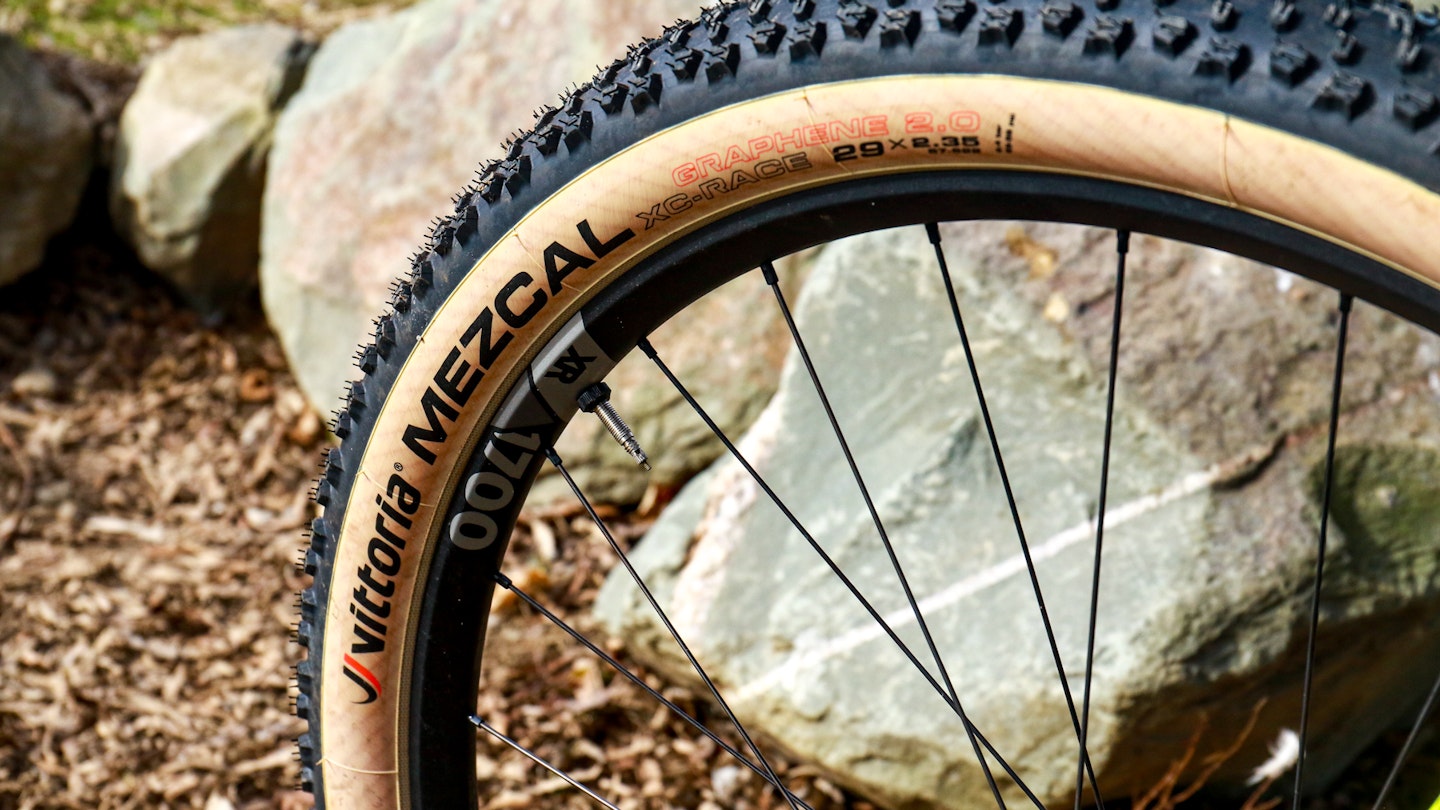
There’s a fair bit of mud clearance on the rear wheel but very little on the front, which means you can’t squeeze a chunkier tread in without downsizing the tyre width, or mudguard. There are no hard-mounting points on the fork for the latter either, which is a bit odd, because I've seen a pair of SIDs with one attached. So pack clear sunglasses in case it rains.
What's it like to ride?
Fast - in all directions and gradients. It leaps off the line with the urgency of a hardtail, with seemingly no pedal-power lost to suspension compression or shifting excess weight.
It makes short work of climbs, particularly with the lockout engaged, and then on the way back down it rolls over obstacles in a way that makes it easy to forget this is a short-travel bike. It's also hilariously agile despite those 29-inch wheels, tipping into corners with very little effort and then railing them hard thanks to its low bottom bracket.
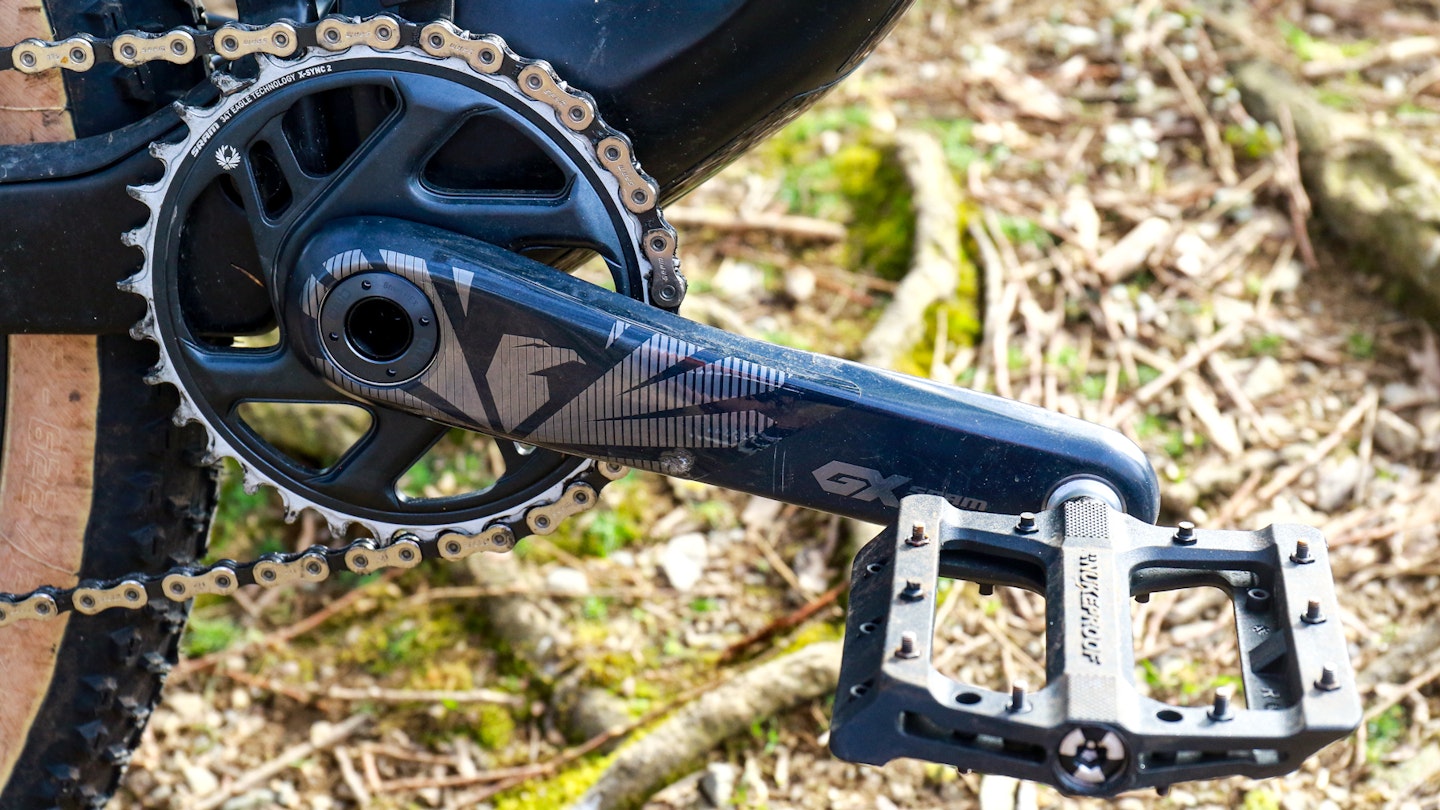
There are some caveats there - the frame geometry is relaxed in XC context - if you're used to a larger trail or enduro bike the head angle is still pretty steep, and the riding position is very forward-biased. Get carried away and the fork quickly runs out of travel, pushing you even further over the front, and while the BB height sits you deep within the bike, you do need to be more conscious of pedal strikes as a result.
Verdict
Small gripes aside, the BMC Fourstroke is by far the most capable XC I've ever ridden. It’s unbelievably fast on rough terrain and climbs like it’s got a motor. Honestly, at times it feels like cheating.
At other times the standover height, tyres and particularly fork feel like they’re holding the frame back. With a bit more travel and a lower seat, you’d be hard-pressed to tell the difference between this and a trail bike.
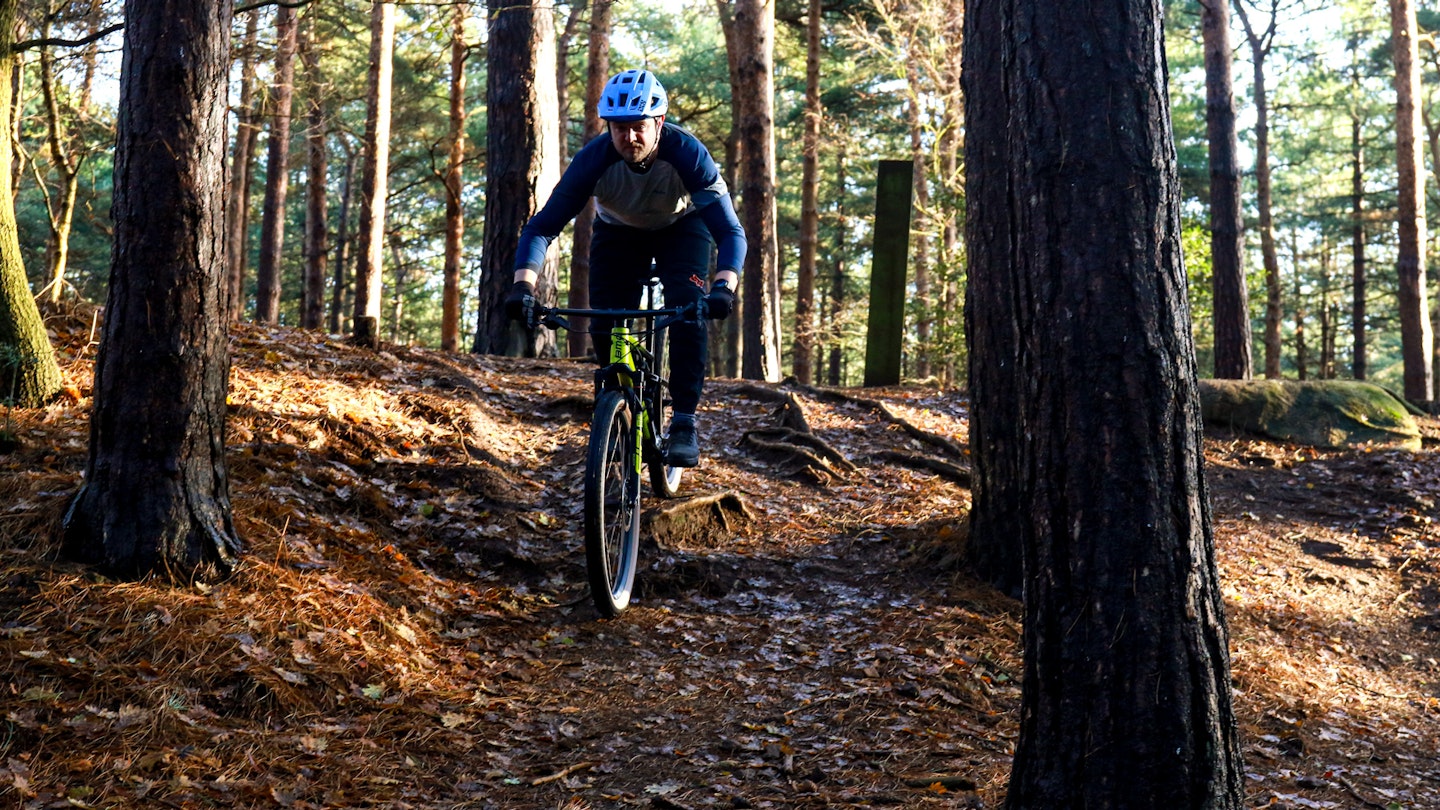
The great news is all of that good stuff in the frame is present on the cheaper builds – the Fourstroke Four is almost half the price of the 01 Two and comes with a hard-working Shimano SLX drivetrain that won’t cost the earth to maintain.
I'm not a weekend XC warrior and so the differences in build aren't as substantial as an extra £4,000 in my pocket - or realistically, another bike in my garage. If you're racing at a competitive level then it's likely that the 01 Two's upgrades could be the final few percentages.
Either way, the Fourstroke as tested felt every penny of its price tag, simultaneously flattering when you get it wrong and confidence-inspiring when you want to push on. A bit like getting into Lewis Hamilton’s car and finding it as easy to drive fast as a VW Golf.
Verdict Score: 4.5/5

www.bmc-switzerland.com
Pros
- Light, stiff, agile
- Climbs like an e-bike
- Confidence-inspiring descender
Cons
- Frame outperforms fork
| Drivetrain | SRAM Gx Eagle AXS |
| Suspension | RockShox SID SL Select+ Fork/SIDLuxe Select+ Shock |
| Wheelset | DT Swiss XR 1700 29-inch |
| Frame | Fourstroke 01 Premium Carbon |
| Brakes | SRAM Level TLM |
| Tyres | Vittoria Mezcal 2.35-inch |
How the BMC Fourstroke 01 Two was tested

I really put the Fourstroke through its paces - on long days over classic cross-country terrain in Woburn and south Wales to fast laps at my local bike park, plus family rides around Pitstone Water and even some tarmac rides to the shops.
Testing initially took place during the depths of winter in equally deep mud, and into spring with its emergence of hard-pack and even a bit of loam.
Adam Binnie is the Affiliate Operations Editor and reviewer for WhatsTheBest, specialising in bikes, fitness, cars, parenting and cooking.
Subscribe to the What’s The Best Newsletter to keep up to date with more of the latest reviews and recommendations from the rest of the What’s The Best team.
